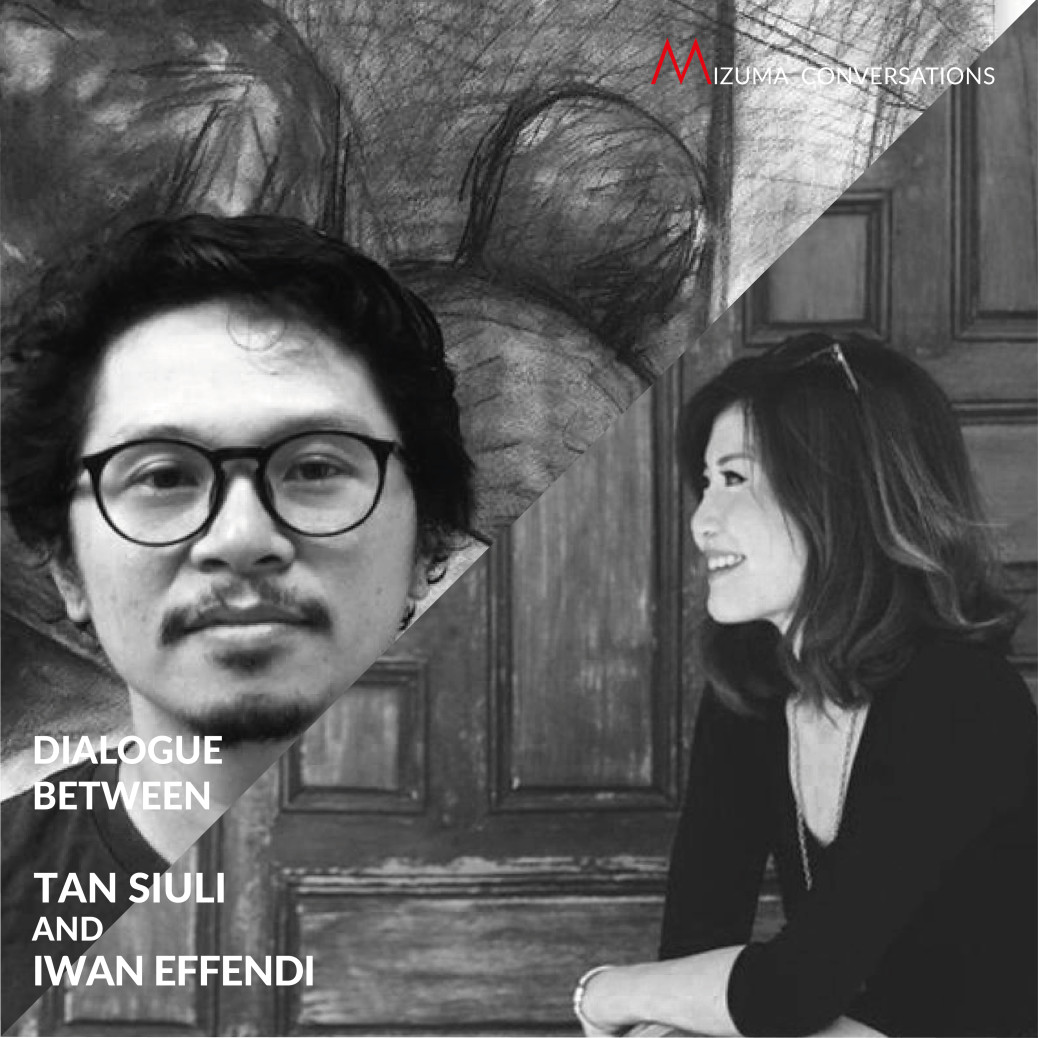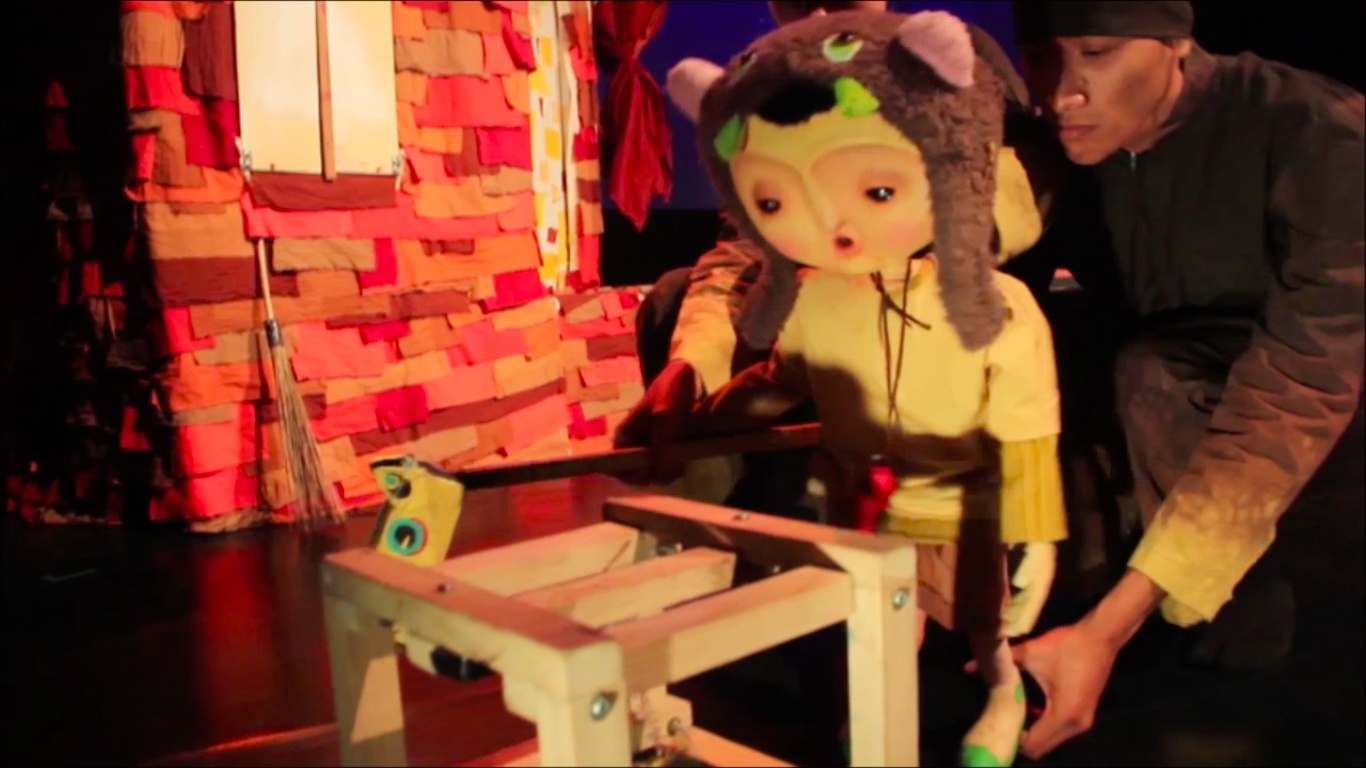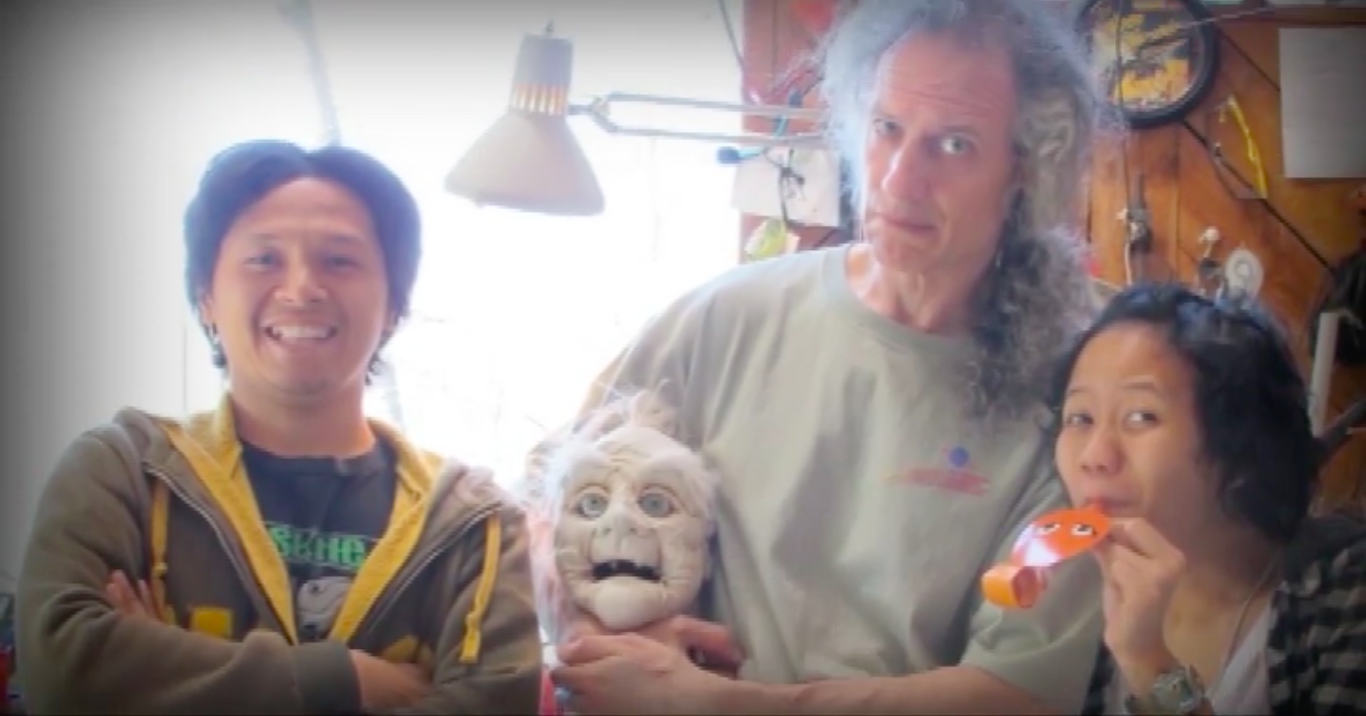“Now, while much of your work may appear very charming, fantastical, and innocent and child-like, a lot of it actually deals with very difficult and complex issues such as death and loss, and even violent episodes in history. I would say it’s quite similar to some of Papermoon Puppet Theatre’s productions. How do you, as an artist, deal with these difficult issues?”
– Tan Siuli
Tune in to our IGTV this week to watch our latest release of Artist Dialogues series, featuring artist Iwan Effendi in conversation with curator Tan Siuli.
Tan Siuli is an independent curator, formerly the Head of Collections and Senior Curator at Singapore Art Museum, and has over 10 years of experience in curating, programming and commissioning contemporary art. Areas of expertise include Southeast Asian and Asian contemporary art, art education, and museum collections. Tan Siuli holds a Masters in Art History from University College London, UK, a BA in Literature and Art History from the University of Nottingham, UK, and a Postgraduate Diploma in Education from the National Institute of Education, Singapore. Tan Siuli lives and works in Singapore.
Iwan Effendi (b. 1979, Indonesia) studied at the Department of Visual Art in Indonesia Institute of the Arts, Yogyakarta, Indonesia from 2002 to 2004. In April 2006, Iwan and his wife, Ria Tri Sulistyani, founded the Papermoon Puppet Theatre. His solo exhibition’s to date include Face to Face at Mizuma Gallery, Singapore (2019); Lunang at Lir Space, Yogyakarta, Indonesia (2013); Eye of the Messenger at Yavuz Gallery, Singapore (2011); and Two Shoes for Dancing at Valentine Willie Fine Art (Project Room), Kuala Lumpur, Malaysia (2009). He has also participated in group exhibitions in Bulgaria, Singapore, Australia, The Netherlands, Philippines, France, Japan, United States, and Mexico. He has undertaken residencies with the Museum of Art in Kōchi, Japan (2015); Federation Square, Melbourne, Australia (2014); and a six-month long residency with Asian Cultural Council in New York, USA (2009-10) researching on puppetry, visual, and performance arts. Iwan Effendi lives and works in Yogyakarta, Indonesia.
Scroll through for the video dialogue, as well as the text transcript below.
Watch the Video:
___________
Tan Siuli (Siuli): Hello, and welcome to another episode of Mizuma Conversations’ Artist Dialogues. I’m Siuli and today I’m chatting with Iwan Effendi, an artist based in Yogyakarta, Indonesia. Hello Iwan!
Iwan Effendi (Iwan): So, hi Siuli! It’s great that Mizuma Gallery initiated this conversation and hope you’re well in Singapore.
Siuli: Now Iwan, I think many people, especially the audiences here in Singapore, know you for your puppet installations because that was the last body of work you presented at Mizuma Gallery in Gillman Barracks, and rightly so as well because you are also the puppet designer and co-artistic director for Papermoon Puppet Theatre. But we’ll come back to this in a short while.
For my first question, I would like to go back in time a little bit to talk about some of the painting works that you made back in 2011 and 2012. When I look at these earlier paintings, I see that many of them have a very haunting and surrealistic quality. I also see quite a lot of references from other visual art sources such as comic books, graphic novels, and perhaps even Japanese anime. So Iwan, my first question: could you share with us a little bit more about these earlier works? What were your sources of inspiration and what were some of the themes and ideas you were exploring in these works? And have these themes and ideas carried on to your later works as well?
Iwan: So about the influences that I have, is… actually it started from 2004 when me as a young artist can access the internet easily during that time, so I can just grab anything that I want during that period. I was just inspired by, you know, comics and also character design, graffiti, pop surrealism and, like, music, and many other things. But during 2011 and 2012, it was quite an important stage for me because that’s the first time I realised that my painting practice and puppetry practice have crossed each other, with the previous production called Mwathirika in 2010, it really combined everything that I have, everything that I experienced into one production. So during that period in 2011, it was my…it’s really different for me to see what I have done and what I will do next with my visual art practice and also my works in Papermoon. And, you know, I realised that I’m a part of this artistic chain in puppetry. I just mix everything up in my practice and for some reason I just believe that art is also, you know, the knife or surgical scissors to observe the cultural or social phenomenon. We need to use them eclectically to experiment with the theme that I’m working on later.
Siuli: Great, thanks Iwan. Now for my second question, I read about an interview you did where you talked about a journey that you made to America. And you made a sort of personal discovery during this trip, because upon encountering the art in America, you realised that what your work had been lacking up till then was a sense of local culture or context. Could you tell us more about what are these aspects of local culture and context that you have incorporated into your art-making?
Iwan: So first, the trip to the US made me realize when I experienced how the artists take influences in urban art that inspired my early practice are not only about young artist movement as just a kind of lifestyle. But I found that some artists, they speak about quite sensitive topics and with a quite unpopular way during that period. So those things made me curious to experiment with the specific topic that I plan to work with and the topics that I have, the context that I have, the experience that I have, socially and culturally.
So second is, my trip to the US with Ria during that time was to observe puppetry in New York City and that was the winter of 2009 and 2010. This trip led us to the curiosities about what we actually have in our puppetry tradition, like the cultural value and also the richness of the medium itself as an art form. I found that Indonesian wayang is always mentioned in the world puppetry history text. So it gave me a feeling of confidence and pride about it that we have this original roots to develop, not only in the exotic way to preserve it but in the spirit of telling stories through puppetry. So I feel that puppetry can be mixed with everything that I explore from the beginning of my career as an artist, to tell such topics for a particular audience that I aim to. With this thought, I decided to try them on to the theme that I worked with and it’s about our own history.
There was a project initiated by Kedai Kebun Forum in 2005, inviting many artists around my age, and talking about the grey history of the 1965 tragedy in Indonesia. Because like, I just remembered that, I think in my generation it’s not something that’s really talked about. That project opened many doors in my daily practice, as an Indonesian, as a young generation, as a young artist, and most importantly, as a grandchild of a man that got jailed because of those events. It explained how my family has shaped, because my grandfather is a dalang, he is a puppet master, but I never saw him perform. He got jailed in 1966, I think, and came out in ‘79 – that’s when I was born. I’m the closest grandchild that he has, because he attended the day I was born and he taught me how to dance, how to draw, how to write in Javanese alphabets. But I never saw him perform wayang personally.
Since 2005, I followed the observations about my own family and the history, I did many interviews with many elderlies about those events. In 2010, I decided to work with this theme together with Papermoon. So I got more involved in puppetry, it made me curious to use what I artistically explore and also together with anxiety about my family history. I always believe that the family history is also the nation’s history.
Siuli: Now, speaking of travel and being inspired by travel, I’m thinking back to a performance installation you presented some time back in Singapore called Suara Muara, and you told me then that it was inspired by a trip to Lasem, an old port town in the North of Java. Have there been any journeys you have taken which have inspired you work? Besides Lasem, have there been any cities or places that left such indelible impressions on you that you have made work based on these experiences and memories?
Iwan: Basically I’m a studio-based artist, I usually work alone, like a painter. But yeah, so I’m not that immediately inspired by places, actually. But since in Papermoon, I work alot with Ria and she can do really quick engagements with particular stories and particular places, get inspired and express it at the same time. So she helps me digest the things that I experience. I believe that a journey can complete or trigger something for an artist to work.
You mentioned about Lasem, that’s actually the biggest trip for quite a big work that was challenged by Art Jog in 2013 to be commissioned. I created the installation for the facade, the Art Jog facade, and because the theme that Art Jog gave me was about maritime culture, the closest place that I think I could explore more was going to Lasem at that time. We just experienced the beach, the rivers. We created the installation after that and that place made us keep coming back to Lasem.
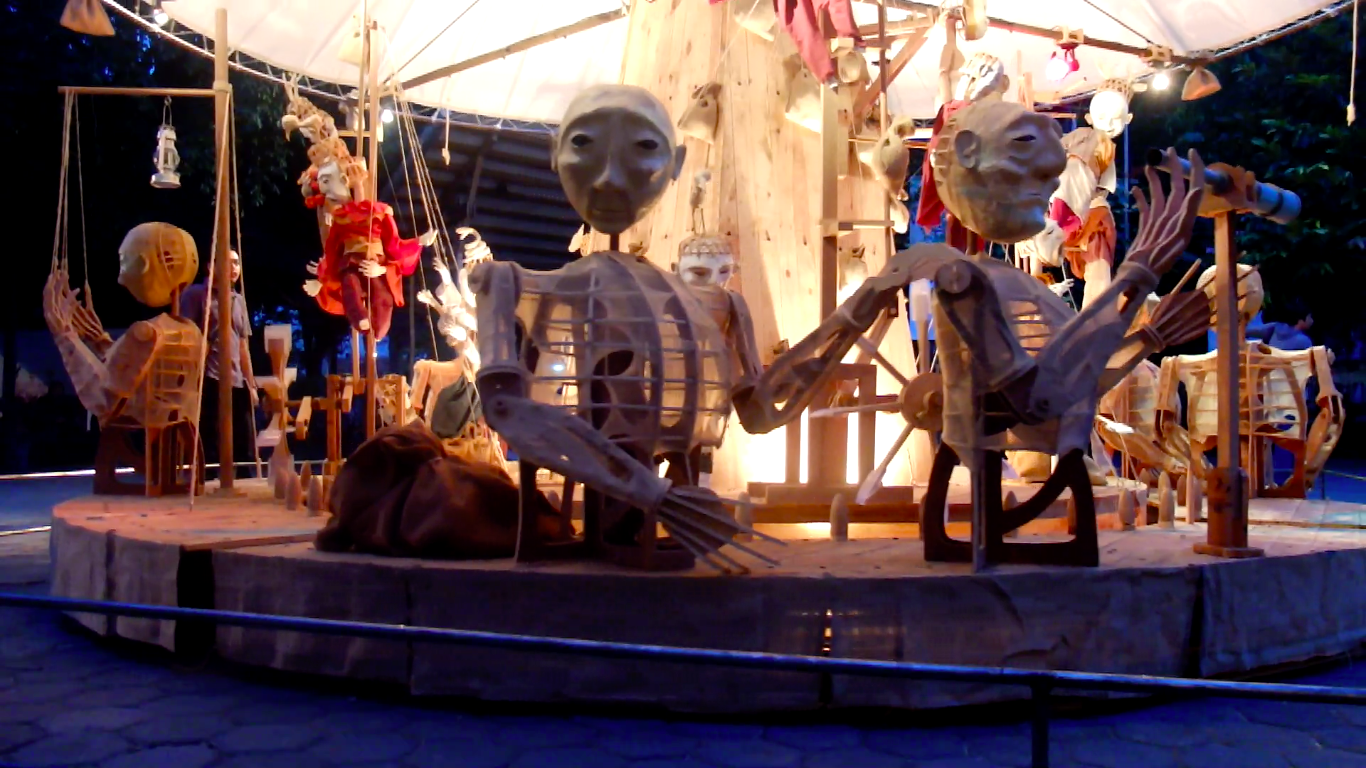
Exhibition view of Finding Lunang feat. Papermoon Puppet Theatre at Art Jog 2013, Taman Budaya Yogyakarta, Indonesia, 2013.
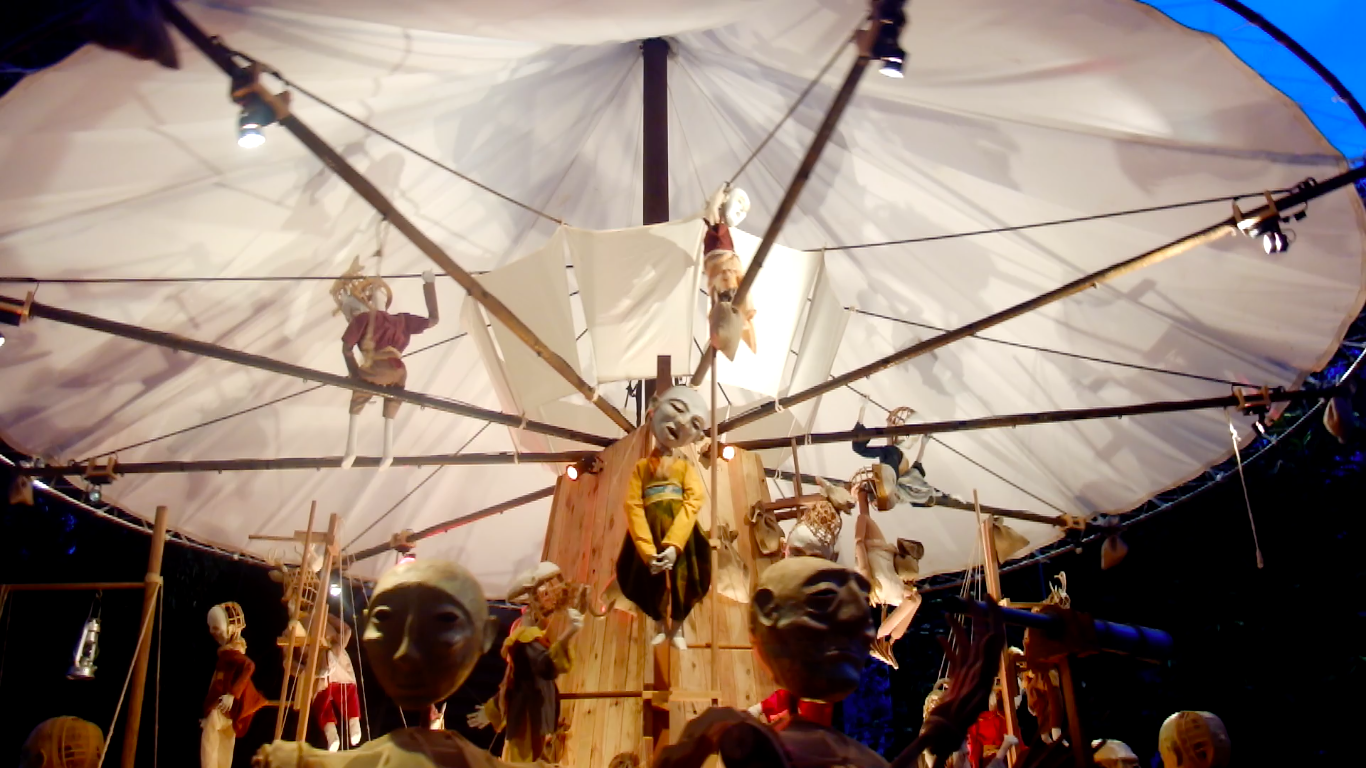
Exhibition view of Finding Lunang feat. Papermoon Puppet Theatre at Art Jog 2013, Taman Budaya Yogyakarta, Indonesia, 2013.
For the second project that we did, actually it’s not a project, it’s for Papermoon’s anniversary. So we knew from someone in Lasem that there was a performance, but it’s more like a ritual actually. There is a wayang, it’s shaped like Semar, and it’s called Mbah Bengkong. We visited and then we initiated a performance where we invited Mbah Bengkong performers to bless our anniversary at that time. It’s quite interesting that we have another kind of puppetry in Java and then those experiences make us develop more and make stories and present in the Singapore Art Museum, that you curated for Imaginarium.
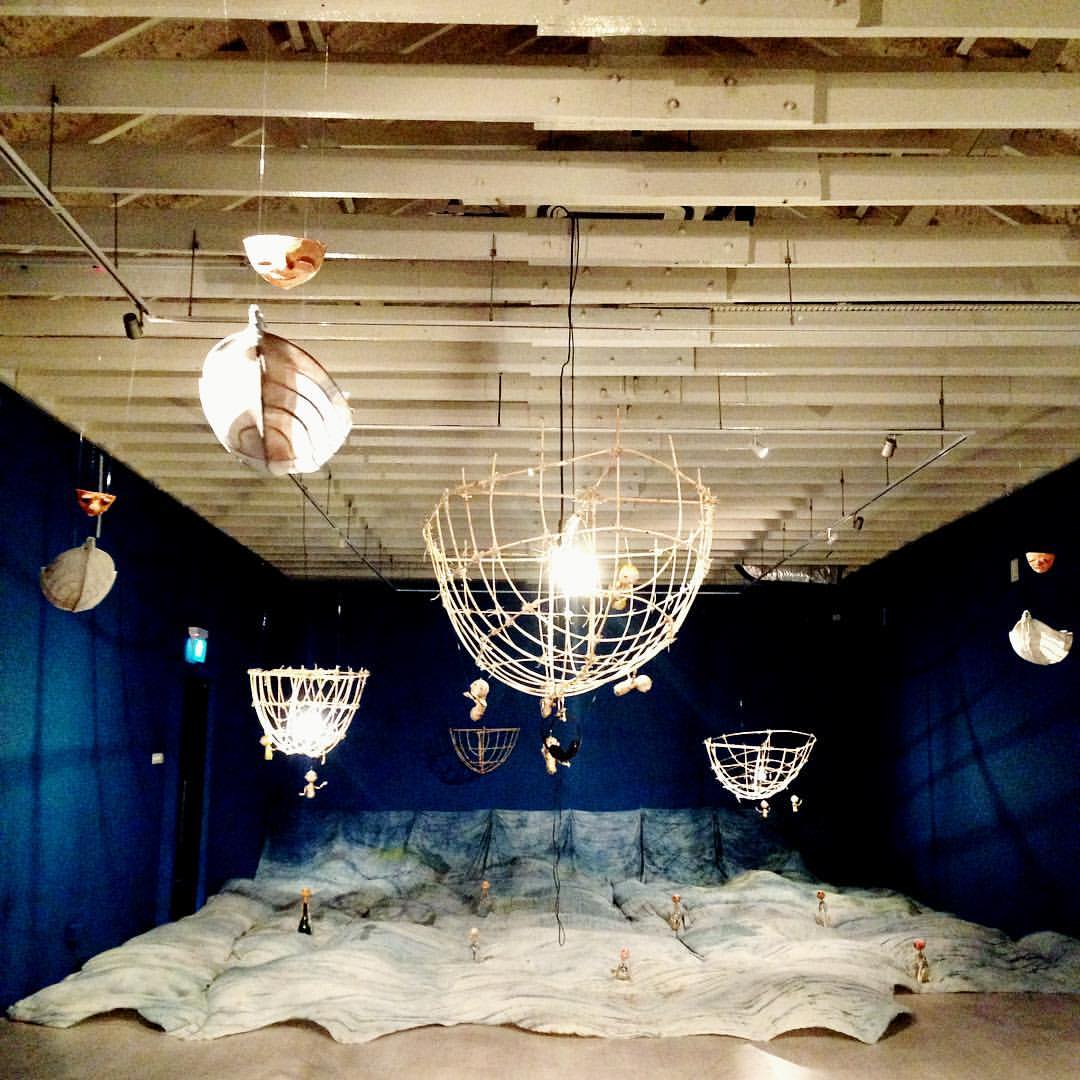
Exhibition view of Suara Muara (The Sounds of the Estuary) by Papermoon Puppet Theatre at Imaginarium: Over the Ocean, Under the Sea, Singapore Art Museum, Singapore, 2016.
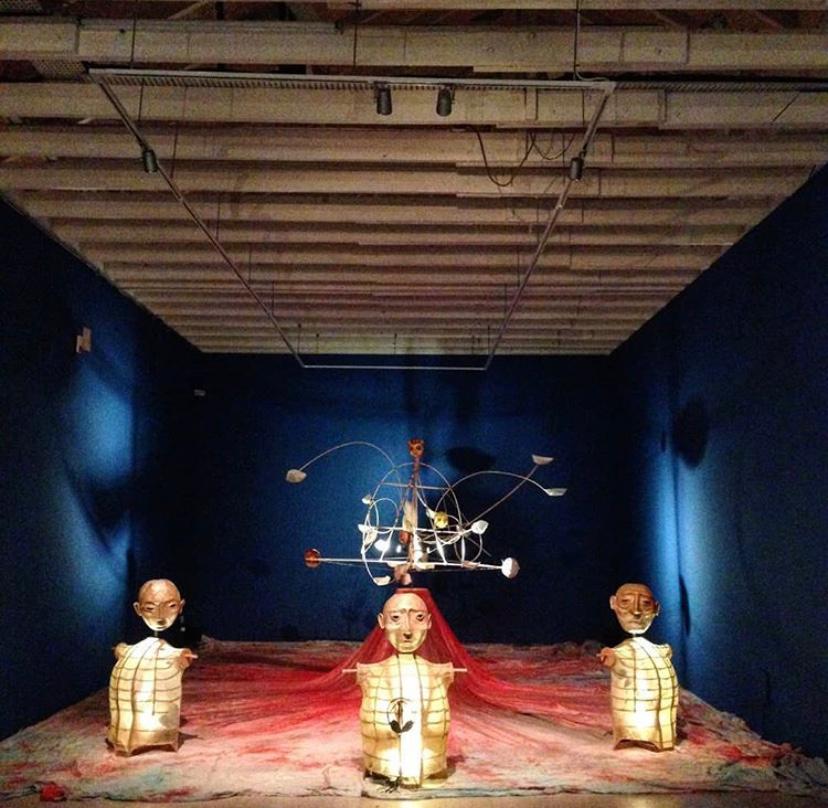
Exhibition view of Suara Muara (The Sounds of the Estuary) by Papermoon Puppet Theatre at Imaginarium: Over the Ocean, Under the Sea, Singapore Art Museum, Singapore, 2016.
Siuli: Now, while much of your work may appear very charming, fantastical, and innocent and child-like, a lot of it actually deals with very difficult and complex issues such as death and loss, and even violent episodes in history. I would say it’s quite similar to some of Papermoon Puppet Theatre’s productions. How do you, as an artist, deal with these difficult issues?
Iwan: It started from the early stages of Papermoon, because Papermoon itself was started as a library for children in the beginning and Ria had a lot of children’s’ book illustrations collections. And for as long as we knew at that time, puppetry was only for children, so we started from that path. But then we realised that this medium can do many things, it can reach anyone in a different way.
We always start with the audiences, so we define the audiences—that will be the first thing that we will decide. So the shape and idiom will go after that, and also the approach, how we approach the topic, something like that. Like the Mwathirika performance, that’s about the 1965 history, we decided to speak about the ‘65 history to the younger audience, aged below us. Then we decided the storyline, we made it as simple as possible, and also because it’s such a… quite a heavy topic and during that period, art and politics was overtalked. After Suharto, many artists did political things, so many younger generations were really resistant to that.
After we define the audiences, then we decide the storyline, and I start to design the look of the puppets; so what kind of puppet can trap them into these kinds of topics. So yeah, that’s actually, I think, that’s the beauty of puppetry. I mean, you just believe it, an object that becomes alive and tells a story. But in the beginning, you don’t have any association with these things. And also, the thing is… there is no intention of the puppet, so it’s just an object. But when it becomes alive and they live together on stage and tell the story, then gradually you will feel something about it. And for us, that’s quite effective. So I think art can do such things, like twisted associations of topics, or themes, or signs. But it depends on how we define the audiences that we want to talk to.
Siuli: Thank you so much for your time Iwan, and for sharing your thoughts with us. Now I have one last question for you and this is probably the most important question of all – which one is your favourite durian?
Iwan: Oh it is, it is the most important question. Musang King is my favourite right now. I have not tried other ones.
—
This dialogue took place through video exchanges between Tan Siuli and Iwan Effendi between August to September 2020.
Copyright and Image Credits:
© Iwan Effendi, Papermoon Puppet Theatre, and Mizuma Gallery.

